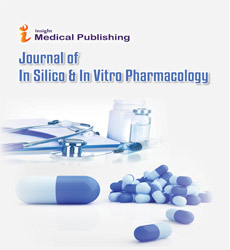Abstract
Pandemic - future proofing clinical trials : lessons learnt from London
Statement of the Problem: In 2020 non-COVID UK research was substantially reduced. The number of trials dropped 26% in Q1/Q2 of 2020 vs 2019 [1]and there were approx. 480,000 participants in non-covid research in 2020 vs 732,716 in 2019. The pandemic in the UK had one of the highest infections per capita in Europe in three discrete ‘waves’ (March-May 2020, Nov 2020-Feb 2020, July 2021).[2] Methodology and Theoretical Orientation: We present the experience of a clinical research organization in London at the epicenter of the first wave. Richmond Pharmacology (RPL) conducts clinical research in both healthy and patient volunteers, including COVID vulnerable conditions such as cardiac amyloidosis, type II diabetes and Wilsons’ disease. Early on a bespoke infection control guideline was established and adapted throughout the pandemic as required. This guideline has included on-site 30- minute turnaround PCR capability, strict entry protocol, HEPA filtration, mandatory N95 masks, social distancing, electronic contact tracing, vaccination and antibody testing. We also instituted an internal trial methodology collecting all data to constantly inform management decisions. Findings: RPL consistently reported positivity rates well below the national estimate (ONS data). Between March 2020 and Sept 2021 there were 69 community-acquired infections amongst volunteers and visitors, 90 PCR-positive infections amongst approx. 300 staff, significantly with zero documented cases of internal transmission. Conclusion & Significance: As a result, after the first wave we were able to continue normal clinical trial activity performing 29 early and late phase clinical trials enrolling 1225 volunteers (319 patients, 906 healthy volunteers) dosed between June 2020 and Oct 2021, with bed occupancy in the second wave comparable to pre-pandemic levels. We present a gold-standard model of pandemic interventions to mitigate risk in an environment of high virus prevalence and a benchmark for continuing drug development in healthy and patient populations in anticipated future crises.
Author(s): Jorg Taubel
Abstract | Full-Text | PDF
Share this

Google scholar citation report
Citations : 203
Journal of In Silico & In Vitro Pharmacology received 203 citations as per google scholar report
Journal of In Silico & In Vitro Pharmacology peer review process verified at publons
Abstracted/Indexed in
- Google Scholar
- China National Knowledge Infrastructure (CNKI)
- WorldCat
- Publons
- International Committee of Medical Journal Editors (ICMJE)
- Secret Search Engine Labs
Open Access Journals
- Aquaculture & Veterinary Science
- Chemistry & Chemical Sciences
- Clinical Sciences
- Engineering
- General Science
- Genetics & Molecular Biology
- Health Care & Nursing
- Immunology & Microbiology
- Materials Science
- Mathematics & Physics
- Medical Sciences
- Neurology & Psychiatry
- Oncology & Cancer Science
- Pharmaceutical Sciences

